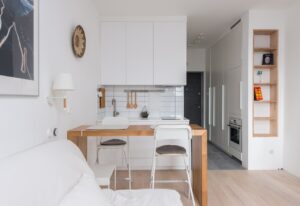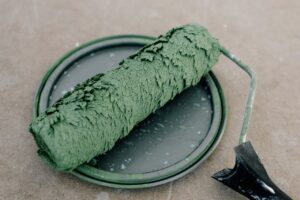
Top 10 Color Combinations For Interior Aesthetic Painting In California
Are you on the hunt for the ultimate color combinations to elevate the enchantment of your home’s interior? The transformative power of choosing the right colors knows no bounds, capable of turning your living space into a realm of wonder. Whether you’re yearning for a snug, inviting warmth or aiming for a dash of contemporary verve, the ideal fusion of colors holds the key to an extraordinary metamorphosis. From the serenity of tranquil neutrals to the audacity of striking and expressive hues, consider us your creative accomplices! In the radiant realm of California, a symphony of coastal allure, urban allure, and untamed beauty harmoniously converge. It’s little surprise that Californian homeowners are driven to mirror this kaleidoscope of inspiration within their abodes. Envisage, as we meticulously present an array of handpicked color ensembles, infusing your dwelling with that unmistakable Californian charisma becomes effortless. Unveil the secrets of how these ingenious color marriages can breathe an exhilarating new vitality into the very fabric of your living spaces. Prepare to embark on a journey of revelation as we delve into the art of discovering the quintessential palette for your upcoming interior aesthetic masterpiece. Your canvas awaits; let’s plunge into the realm of possibilities and unveil the perfect color symphony for your artistic endeavor! 2023’s Hottest Interior Paint Colors Setting California Homes Ablaze! Keeping up with the latest trends is crucial, and in 2023, Californian homeowners are drawn to specific paint colors that effortlessly elevate their living spaces. By acquainting yourself with these favored interior paint colors, you can ignite your creativity and impart a contemporary touch to your abode. Californians have an inherent knack for aesthetics, and this year is no different. Let’s delve into the most coveted paint colors that are currently dominating the interior design landscape in the Golden State. 1. Tranquil Seaside Green Among Californians, tranquil seaside green has gained substantial acclaim. This rejuvenating hue introduces a sense of serenity to any room, making it particularly fitting for bedrooms or home offices where relaxation and concentration take precedence. 2. Inviting Rustic Terracotta Embracing earth-inspired tones has become a prevailing trend, and inviting rustic terracotta embodies this movement. This opulent, reddish-brown shade imparts warmth and dimension to living rooms or dining areas, crafting an inviting ambiance for gatherings with loved ones. 3. Enduring Indigo Blue Indigo blue maintains its cherished status among homeowners seeking a blend of timeless and contemporary charm. Its versatility makes it a suitable choice as an accent wall or as the dominant hue in more expansive spaces such as living rooms or kitchens. 4. Delicate Blush Rose For those who favor a softer visual appeal, delicate blush rose has emerged as a favored selection in numerous Californian residences. This gentle shade adds a touch of femininity without overpowering the overarching design, making it an excellent choice for bedrooms or nurseries. 5. Refined Slate Gray The ascent of refined slate gray is owed to its ability to cultivate an upscale and sophisticated atmosphere. Whether adorning walls or furnishings, this versatile color harmonizes seamlessly with various design styles, spanning from modern to traditional. 6. Lively Sunflower Yellow Injecting a burst of color into your living space can instantaneously elevate its mood. Lively sunflower yellow proves to be a splendid option for accent walls or furniture pieces, infusing vivacious and spirited vibes into living rooms or home offices. 7. Crisp Ivory Though it may exude simplicity, crisp ivory endures as a timeless and favored choice for interior painting. Its knack for conjuring a clean and invigorating aesthetic renders it fitting for any room in the domicile, offering a blank canvas that permits other elements to shine. 8. Organic Olive Harmony Californians increasingly gravitate toward organic tones that establish a connection with nature, and olive harmony is emblematic of this trend. This soothing shade introduces an organic sensibility to spaces like bathrooms or kitchens, fostering a tranquil ambiance reminiscent of outdoor vistas. 9. Expressive Plum Enigma For those inclined to make a daring proclamation, the expressive plum enigma presents a beguiling option. This profound hue imparts depth and theatricality to bedrooms or dining areas, particularly when deployed strategically as an accent wall or infused through accessories. 10. Serene Misty Blue-Gray Serene misty blue-gray has garnered recognition as homeowners seek soothing hues that nurture relaxation and mindfulness. This adaptable color performs admirably in bedrooms or living rooms, fashioning a serene setting ideally suited for unwinding at the day’s end. Discover The Finest Color Combinations For Enhancing Interior Aesthetics In California Immerse yourself in an exclusive compilation of the finest color pairings meticulously tailored to the essence of Californian interiors. Unearth distinct and visually captivating color amalgamations that will set your residence apart. Delve into a myriad of choices to unearth the flawless blend that resonates with your individualistic flair. Californian interiors boast a vibrant and eclectic design sensibility. From charming coastal abodes to contemporary urban lofts, the extensive array of domiciles in California presents boundless prospects. Whether your aspiration is to craft a tranquil sanctuary or to manifest a daring proclamation, presented below are the supreme 10 color combinations that possess the potential to metamorphose your environment: 1. Coastal Tranquility: Embrace the serenity of California’s coastlines through a palette influenced by sandy beaches and maritime hues. Merge gentle beige walls with accents of seafoam green, sky blue, and coral for an invigorating and breezy ambiance. 2. Desert Mirage: Seize the essence of California’s desert panoramas by fusing warm earthy tones with splashes of vivacious hues. Opt for terracotta walls complemented by cactus green, dusty pink, and mustard yellow accents. 3. Urban Elegance: For those who seek a sleek and contemporary demeanor, opt for an urban-chic color scheme. Select cool grays as your foundation, punctuated by hints of metallic silver or gold, alongside profound navy or burgundy highlights for a multi-dimensional effect. 4. Bohemian Enchantment: Infuse your space with bohemian allure, employing opulent jewel tones harmonized with organic textures. Adorn your walls with shades of deep purple or teal and accessorize









